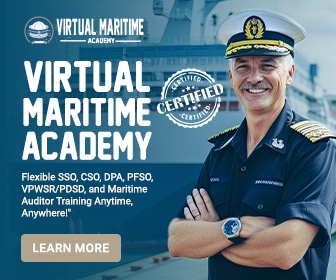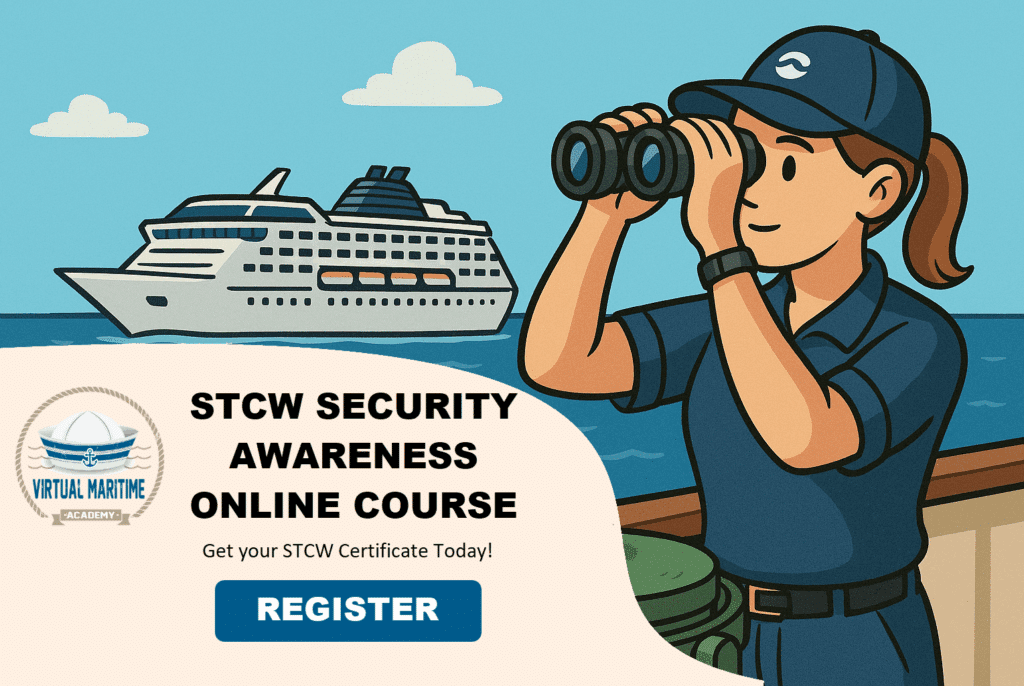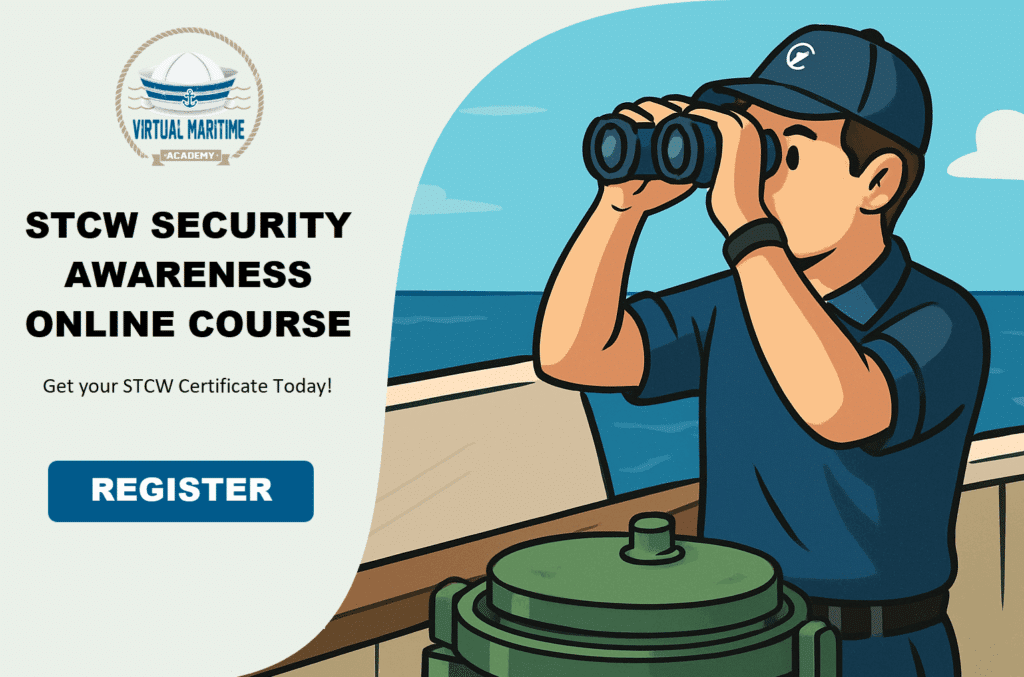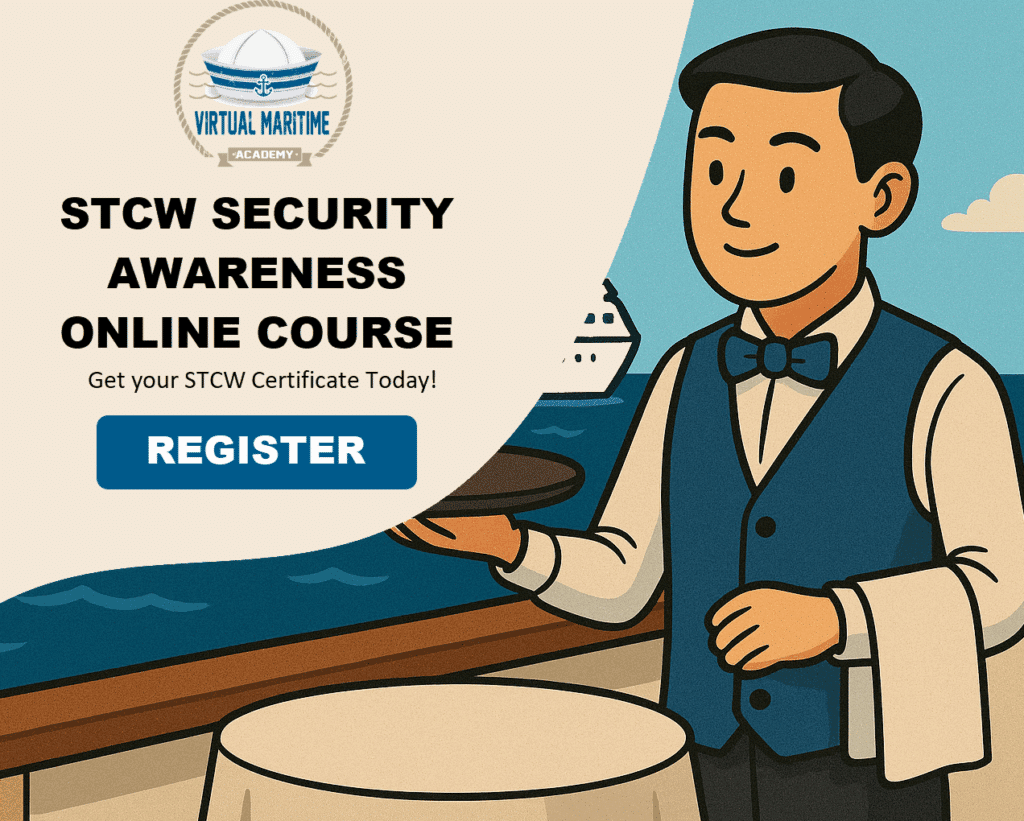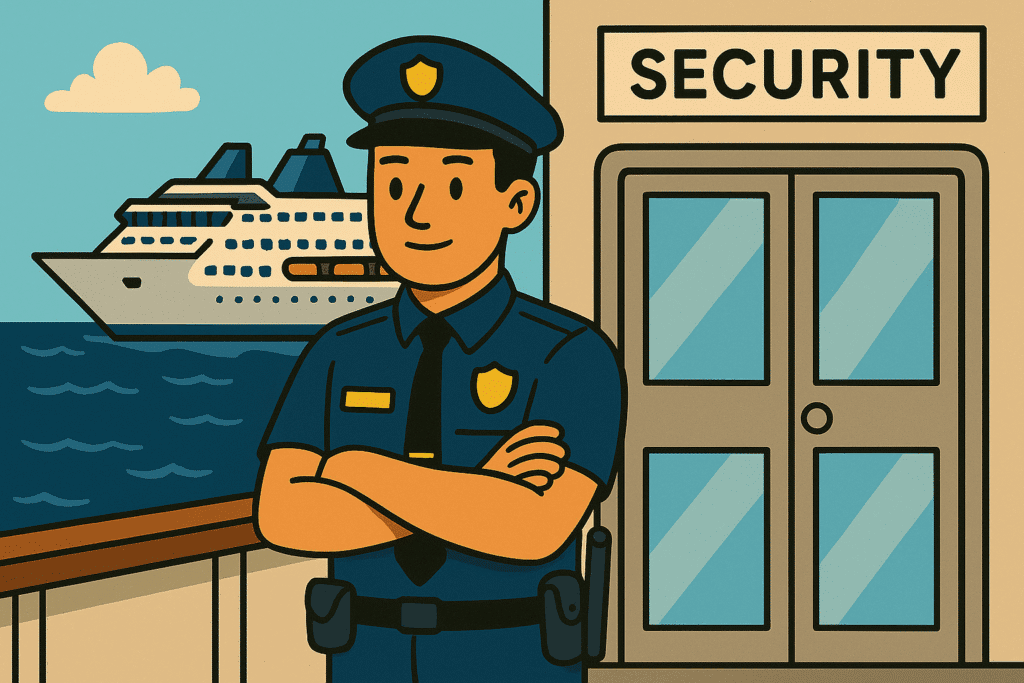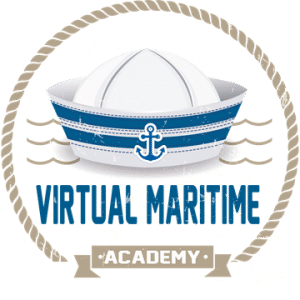Cruise ships are floating cities, that offer unparalleled experiences to guests from around the world. Behind this enchanting facade lies a crucial element that ensures the smooth sailing of the entire operation: security awareness. For cruise ship crew members, understanding and applying Proficiency in Security Awareness (PSA) training is not just a regulatory requirement but a key ingredient in maintaining the safety and security of the vessel and its passengers. In this article, we will delve into the significance of applying PSA training effectively during a cruise voyage, exploring how maritime professionals can transition theoretical knowledge into practice, examine real-world case studies of successful implementations, and ultimately evaluate the profound impact of PSA training on the safety of crew and guests alike.
Learn More About our PSA Online Course Here!

Key Takeaways
- PSA training is essential for enhancing safety protocols in maritime settings.
- Practical implementation of PSA training during cruise voyages can significantly improve emergency response efficiency.
- Real-life case studies demonstrate the effectiveness of PSA training in preventing incidents at sea.
- Feedback from crew members highlights the importance of practical training in boosting confidence and preparedness.
- Evaluating the impact of PSA training showcases its positive influence on overall safety for both crew and passengers.
Understanding PSA Training in Maritime Contexts
Understanding PSA Training in Maritime Contexts
In the ever-evolving landscape of maritime safety, the importance of Proficiency in Security Awareness (PSA) training cannot be overstated, particularly for cruise ship crew members. The PSA/VPWOSR course is designed to equip vessel personnel—especially those without formal security responsibilities—with the critical knowledge and skills needed to identify and respond to security threats effectively. From theory to practice: applying PSA training during a cruise voyage is essential for maintaining a safe environment for both crew and passengers. Crew members must recognize that even activities such as passenger boarding, baggage checks, and onboard events can present security challenges. By actively leveraging their PSA training, seafarers can monitor suspicious behaviors, report security breaches, and ensure adherence to safety protocols. This proactive approach not only enhances individual skill sets but ultimately contributes to a culture of vigilance and safety aboard the cruise ship. Investing time in mastering the principles learned from the PSA/VPWOSR course transforms theoretical knowledge into practical actions that bolster cruise ship security. Understanding one’s role in this framework is vital for the safety and security of all onboard, making every crew member a key player in the maritime security ecosystem.
The Importance of Practical Implementation on Cruise Voyages
The importance of practical implementation on cruise voyages cannot be overstated, particularly when it comes to enhancing cruise ship security training. Understanding how to transition from theory to practice is crucial for crew members who have undergone the Proficiency in Security Awareness (PSA) and Vessel Personnel Without Security Responsibilities (VPWOSR) course. This training provides a strong foundation in security awareness, but it’s the real-world application that solidifies that knowledge. Throughout a cruise voyage, crew members are often the first line of defense against potential security threats. By applying skills learned in PSA training—such as identifying suspicious behavior, understanding the significance of access control, and knowing how to report security incidents—crew members can effectively contribute to maintaining a safe environment for passengers and fellow staff. For instance, during embarkation and disembarkation processes, crew should be vigilant and attuned to any irregularities, ensuring that proper security protocols are adhered to. This practical application not only reinforces the importance of seafarer security awareness but also fosters a culture of safety onboard, which is paramount in today’s maritime industry.
‘The only way to do great work is to love what you do.’ – Steve Jobs
Learn More About our PSA Online Course Here!
Case Studies: Successful Applications of PSA Training
In the maritime industry, the effective implementation of Proficiency in Security Awareness (PSA) training is essential for maintaining the safety and security of cruise ships. One remarkable case study demonstrating the application of PSA training during a cruise voyage involved a vessel operating in vulnerable waters known for piracy threats. Crew members who participated in the PSA/VPWOSR course were equipped with the skills needed to recognize potential threats and suspicious behavior among passengers and crew. For instance, during one voyage, a crew member spotted an individual attempting to access restricted areas using a fake staff ID. Utilizing their PSA training, the crew member promptly reported the incident, enabling security personnel to respond effectively and mitigate any potential risk. This incident highlighted how proactive seafarer security awareness not only protects the crew and passengers onboard but also ensures smooth operations throughout the journey. By integrating theoretical knowledge from the PSA training into practical scenarios, cruise ship crew members can uphold a secure environment, thereby reinforcing the importance of security awareness training as a pivotal component of maritime safety.
Evaluating the Impact of PSA Training on Crew and Passenger Safety
Evaluating the impact of PSA (Proficiency in Security Awareness) training on crew and passenger safety is crucial for the maritime industry. From theory to practice: applying PSA training during a cruise voyage not only enhances the crew’s understanding of security protocols but also equips them with the skills necessary to respond effectively to potential threats. This training emphasizes the importance of recognizing suspicious behavior, reporting incidents promptly, and understanding the roles each crew member plays in ensuring the safety and security of everyone onboard. By actively implementing the principles learned in the PSA/VPWOSR (Vessel Personnel Without Security Responsibilities) course, crew members become integral to the ship’s security strategy, thereby fostering a safer environment for passengers and fellow staff. Practical applications might include conducting security drills, sharing insights on real-world security incidents, and reinforcing the significance of vigilance at all times, ultimately transforming theoretical knowledge into actionable safety measures.
About Virtual Maritime Academy
Virtual Maritime Academy is a global leader in online maritime education and training, offering courses designed to meet the evolving needs of the shipping industry. As a DNV Certified Maritime Training Provider with CPD and Transport Canada accreditation, we deliver cutting-edge programs that prepare seafarers and maritime professionals for today’s and tomorrow’s challenges. 🌊⚓


